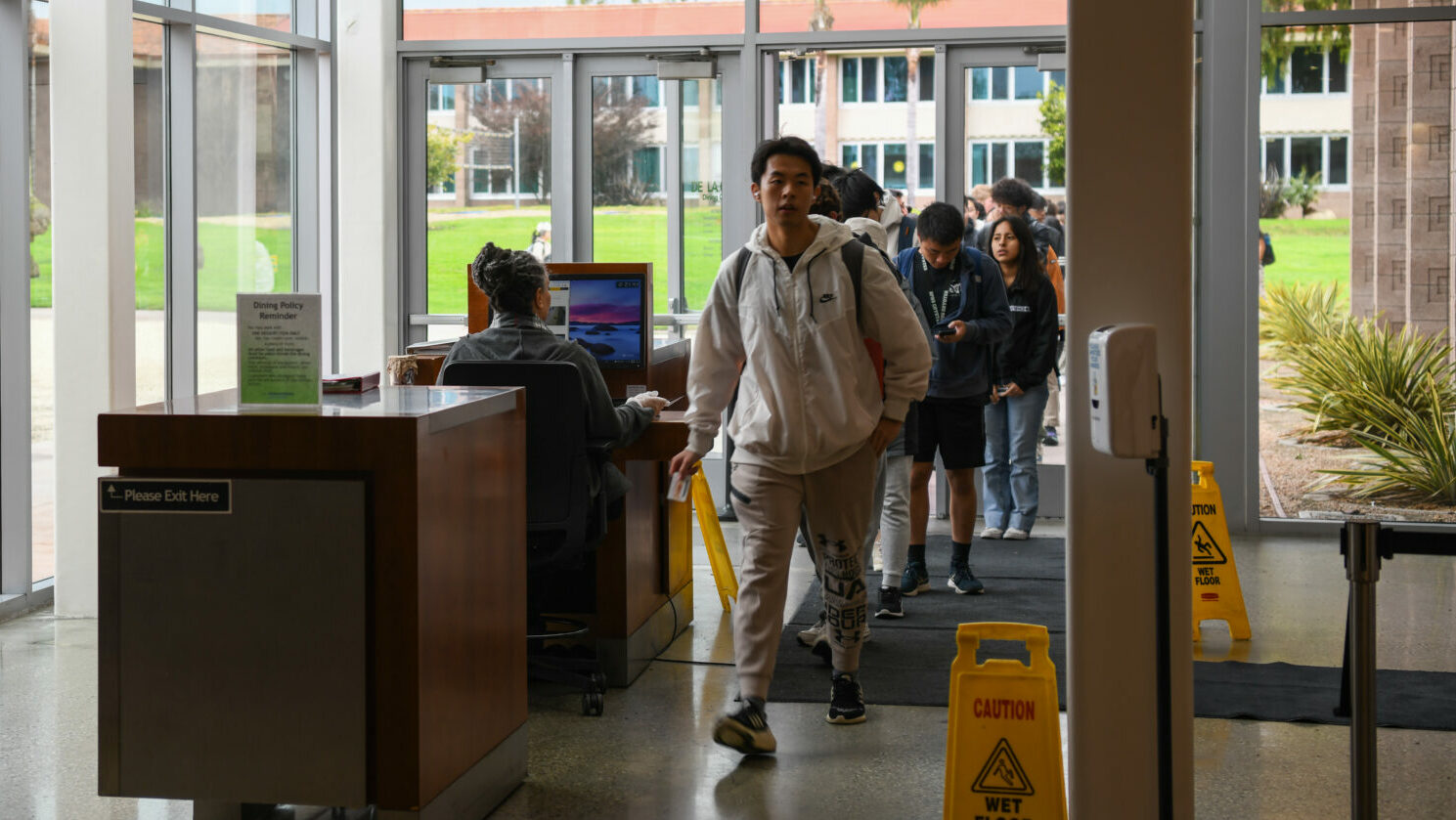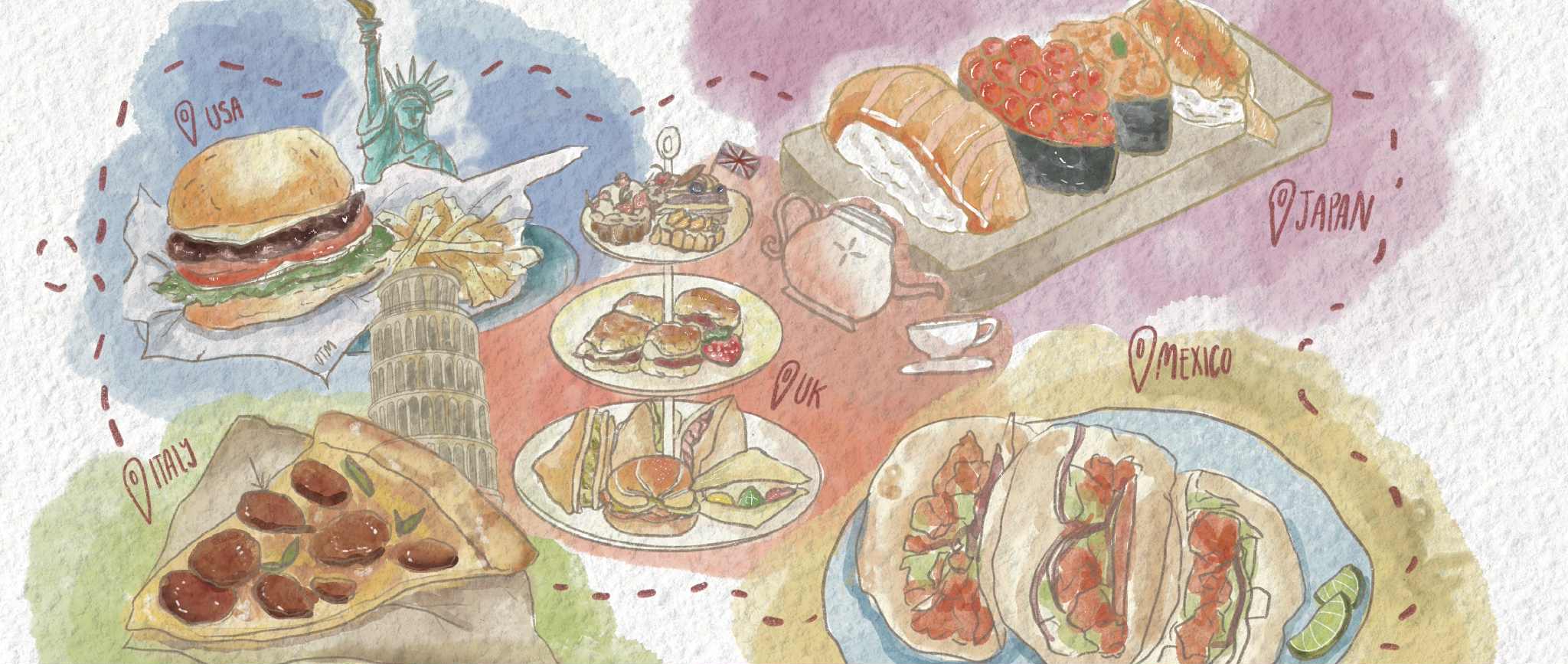After a decade of student advocacy, UC Santa Barbara’s meal swipe program will now allow students to rollover up to three unused meals per week. In addition, students have up to five guest meals each quarter.

YDSA advocated for meal swipe rollovers by first putting out a petition signed by 2,000 people. Nexus file photo
This new program is the result of advocacy from UCSB’s Young Democratic Socialists of America (YDSA), who sent out a petition in early 2024, gaining over 2,000 signatures. The petition resulted in the University launching a pilot program, where a random sample of 10% of meal plan holders were opted in to test the meal swipe reforms.
UCSB was one of two UC campuses, alongside UC Berkeley, that did not have meal swipe rollovers. UCSB’s meal plans are divided into three types: Gaucho Silver, which includes 10 weekly swipes and three guest meals; Gaucho Gold, which includes 14 weekly meal swipes and four guest meals; and Gaucho Platinum, which includes 19 weekly meal swipes and five guest meals. Each plan can only rollover up to three unused meal swipes per week and meal swipe rollovers expire each quarter.
YDSA’s co-chairs, third-year religious studies and Black studies double major Ciara Johnson and fourth-year biochemistry major Michael Collin, said YDSA’s advocacy began in the fall of 2023, when they began by going door to door at on-campus residence halls to survey students’ experiences with meal plans.
“We were asking, ‘Hey, how many meal swipes do you use per week? Do you ever skip meals on purpose because you don’t have any meals in your meal plan? Did you have to go down on meal swipes in order to qualify for EBT and how is that affecting you?” Johnson said.
After surveying the residence halls, they started their petition and hosted a town hall that garnered more attention for the reforms. The administration then reached out to begin negotiating YDSA’s demands, resulting in the University launching the pilot program in the fall of 2024. The pilot program included four meal swipe rollovers each week and three that students could donate to the Associated Students Food Bank.
After a year of the pilot program, Collin said the University approached the YDSA and specified rollovers “[don’t] come at much of a cost for the University,” so it implemented the program for all students. According to Collin and Johnson, the rollovers do not come at an increased price for meal plans.
Collin spoke about how the lack of meal swipe rollovers was a large part of how the University profited from meal plans.
“They are counting on students to not use all of their meals, so it wouldn’t make sense to have it roll over,” Collin said. “After [the pilot program] happened, they found that it wasn’t really coming at much of an additional cost to have rollover, because most students were using the majority of their meal swipes.”
Considering that 48% of undergraduate students and 31% of graduate students face food insecurity, Johnson emphasized the importance of University services that provide food for students.
“It’s proven that [the University has] the money for it. They’re just choosing to not invest it in students and in the student body because they don’t have any pushback,” Johnson said. “Through having the students who are paying for school here actually come together and talk about these things and actually be thinking about, ‘What can we do to actually force the University to act as a safe space for us?’, then we can actually see some changes happen.”
Collin emphasized the importance of student advocacy to achieve better fulfillment of students’ basic needs.
“I think it goes to show the power of not just students, but all of us as students and workers and members of our community coming together and what we can achieve by making demands of systems and institutions that already exist,” Collin said. “We have to come together as a large group of people to demand that [the University] actually takes care of us, our citizens, the people paying taxes and the people paying tuition.”
A version of this article appeared on p. 1 of the Oct. 2, 2025 print edition of the Daily Nexus.





















There are many plump starving college students in that photo.
What an loser incel. So stupid-like a 12 year old no wonder you failed out. Please point out the “plump” kids in the photo. Bc despite you trying and failing to mock the students its obvious you didnt look at the photo and just wanted to try and complain about something that has 0 impact on you.
Go try and succeed at something UCSB wasnt it stop coming back
What a fat low IQ furrie you are.
Another 12 year old comment- grow up. Get out of your moms basement – so pathetic
A 12 year-old can at least know the difference between a man and woman, unlike you fat stupid furrie.
what are you babbling about? You just make stuff up because you dont know anything and make no sense but i know you failed out of UCSB and you cant get over it 🤡 Incel loser trying to mock people who do what he cant
Overweight students often have to fill up on high caloric snack food rather than healthy balanced meals that they could get at school .
Make fat shaming great again.
Are you a student? Why are you trying to shame students struggling when it doesn’t impact you? Are you that sad and miserable in your own life? You just seem like a miserable troll from your posts
Many of those plump students are international students with rich parents paying a lot of money in tuition while California residents are being denied entry into UCSB.
Do you lack focus? You seem unable to stay on one topic and randomly lash out. What a miserable sad person.
My focus is on making America great again. That starts by having President Trump take away money from places such as UCSB that indoctrinates students to hate conservative Americans that believe in capitalism and Christianity. It’s not ‘fascist’ to protect one’s own borders. What’s fascist is large groups of ANTIFA taking US citizen’s cameras and breaking them because they don’t like being shown with their communist flags rioting in US cities.
None of that is happening. Who at ucsb hurt you? Did you really fail out? You seem angry and delusional
You can gaslight all you want but I’m not falling for it. All of that stuff I’ve mentioned has happened and you should know that if you did 30 minutes of research on it. You do know how to research?
I never failed out of UCSB. I did go to UCSB then went to another college because I didn’t like UCSB’s lack of classes for my degree and some of the unprofessional professors I met.
Sounds like you failed out. None of what you say is happening is reality. You are delusional and listening to propaganda stop watching the daily stormer and live a real life. Super sad and pathetic to hear someone so brain washed and full of anger and empty rhetoric
Sounds like you like to project because you are the troll. I said I didn’t fail and you say “sounds like you failed out.” You feign ignorance to basic grammar which makes you the troll.
You even type like a bot. You failed at trolling the student newspaper of a school you couldnt cut it at. Super sad and a little funny
Eat less so you can be a skinny furrie, not a stupid fat furrie.
angry lashing out like a child. Its really funny to watch you cycle and act out like a petulant child. What a joke. Go outside, touch some grass get off the conspiracy theories. You are an example of why inbreeding is bad
I am so sick and tired of all the FoxNews-watching republitards cutting all of are programs such as the meal ones. These monster truck driving rednecks our so full of hate and I despise them.
Spoken like a true gay furrie.